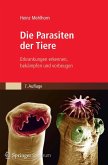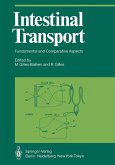Background: Nematodes of the family Anisakidae are parasites of marine organisms, such as fish and sea mammals, pose a threat to humans and cause the disease anisakiasis. In Australia, little has been done to evaluate the risk of exposure for consumers of infected fish to these parasites. The aim of the present study is to partially address this gap by a small-scale survey of five local fish species from southern Australia destined for consumption. Methods: Fish were collected and examined for intestinal worms, including anisakids. The parasite larvae collected were fixed and identified both by morphological/morphometric analysis and by molecular investigation of the PCR-amplified internal transcribed spacer region of nuclear ribosomal DNA. Both datasets were combined and interpreted together with other biological data. Results: Infection rates of anisakid nematodes in the respective fish species ranged between 20 % and 100 %. Larval stages of seven anisakid species of three different genera, namely Anisakis, Contracaecum and Hysterothylacium, were identified. Some species discovered represent molecularly uncharacterized specimens and await unequivocal identification. Conclusion: The data show that Anisakis and related species are prevalent in southern Australia, in some fish hosts in large numbers. Further research will provide a better understanding of the parasite and other factors linked to anisakiasis.
Dieser Download kann aus rechtlichen Gründen nur mit Rechnungsadresse in A, B, BG, CY, CZ, D, DK, EW, E, FIN, F, GR, HR, H, IRL, I, LT, L, LR, M, NL, PL, P, R, S, SLO, SK ausgeliefert werden.









